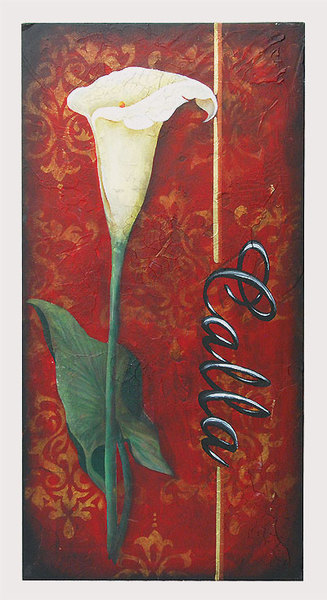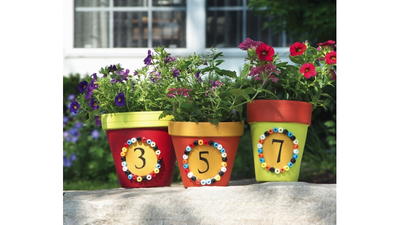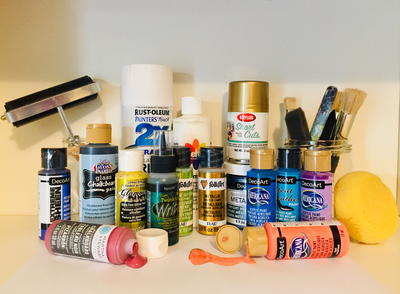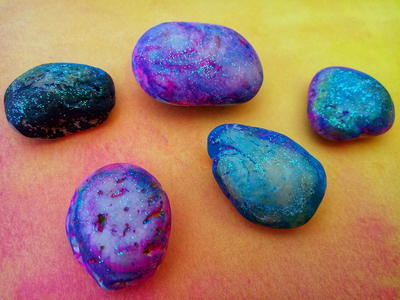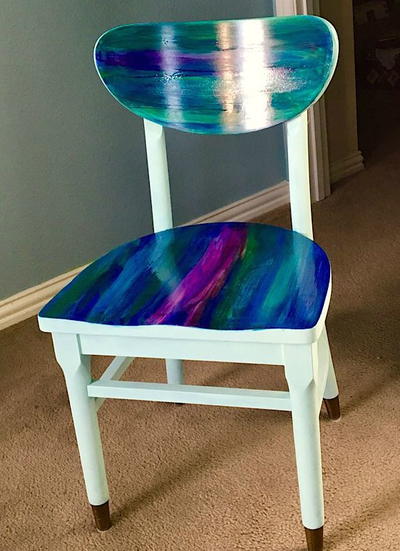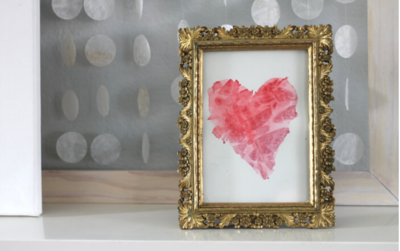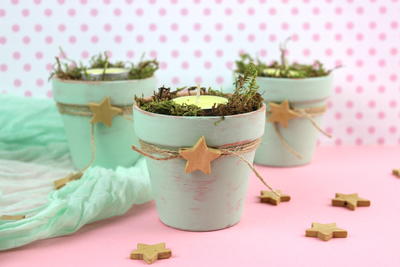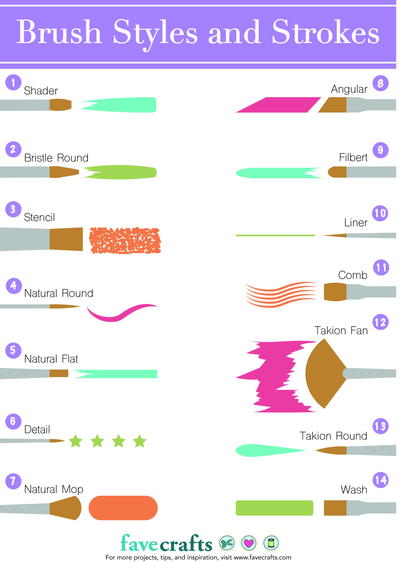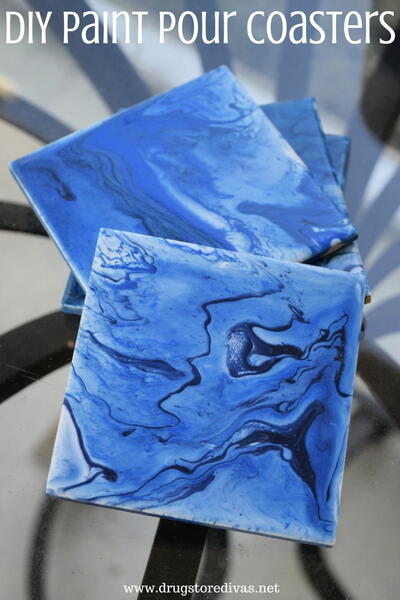Calla Lily Canvas
This beautiful, decorative calla lily painting is easy to achieve with the help of patterns.
by Deco Art

Materials:
DecoArt Products Required
Americana Acrylics
- DAO1 - Snow (Titanium) White
- DAO10 - Cadmium Yellow (transparent)
- DAO51 - Leaf Green
- DAO52 - Avocado
- DAO67 - Lamp (Ebony) Black
- DA113 - Plantation Pine
- DA180 - Asphaltum
- DA265 - Tuscan Red
Texture Crackle
- TXC08 - Deep Tuscan Red
Dazzling Metallics
- DA148 - Emperor's Gold
Acrylic Gesso
- TXFP06 - Acrylic Gesso
Faux Glazing Medium
- DS18 - Faux Glazing Medium
Americana Spray Sealers
- DAS13 - Americana Matte Spray
Supplies
- Filbert Wave 8 brush
- Angular Shader 3/4" brush
- Liner 5/0 brush
- Flat Wash 3/4" brush
- Stencil brush
- Brocade stencil or pattern (your choice)
- Wide blade palette knife or flexible taping knife
- Blue shop towels
- Gold leafing pen
- Empty paint bottle
- Cork-backed ruler
- Sandpaper
- Brush basin
- Palette paper
- Tracing paper
- 12"x 30" gallery wrapped canvas by Frederix
Steps:
Preparation: Check for any flaws or areas that need repair of attention. When ready, apply two coats of Texture Gesso to surface, front and sides, allowing each coat to dry well. Scuff sand lightly when completely dry.
1. With wide blade palette knife, apply irregular coat of Deep Tuscan Red Texture Crackle to entire surface of canvas. (Make sure that it is quite thick in some areas and thinner in others. It doesn't have to be heavily textured, but you do have to cover surface.) As it dries, texture will begin to crackle. Thicker areas will have larger plate; finer plate will show in thinner applications.
2. When it is completely dry, give surface very light sanding to remove any loose bits.
3. Apply brocade stencil motif to canvas with Emperor's Gold and stencil brush. Work nearly dry brush in circular fashion over stencil. (Having less paint in brush allows you to be aggressive without causing paint to bleed under edges of stencil.) Motif should be rather imperfect, with some Deep Tuscan Red background showing through.
4. Mix 2 tablespoons of Lamp Black with 2 ounces of Faux Glazing Medium in empty paint bottle. Shake well. Pour some mixture onto damp piece of shop towel and rub it evenly all over canvas. (Deep Tuscan Red and Emperor's Gold should be very muted by this but not obliterated. If it is still quite bright, apply another coat of Lamp Black glaze.) Let dry.
5. With angular shader brush, apply wide float of Lamp Black/glaze mixture to canvas edges.
6. Trace and transfer lettering of your choice to right side of surface. Basecoat lettering Lamp Black, using filbert brush.
7. Highlight each letter on left side with dry brush of Snow White using same brush, keeping highlighting loose and undefined.
8. Outline each letter with liner brush and Emperor's Gold.
9. Trace and transfer line drawing to left side of canvas.
10. Basecoat blossom of lily Snow White with filbert wave brush. (Use lots of paint on brush.)
11. Pressing loaded end of brush to edge of petal, push forward slightly, pressing and pulling down toward throat of lily. Flower edge should be slightly raised, and there should be visible brush marks in the paint. (If you aren't happy with stroke, simply go over it with freshly loaded brush.)
12. Continue in this fashion until flower is complete.
13. When Snow White is dry, apply float of Asphaltum to underside of edge of lily and along overlap.
14. Load filbert brush with Cadmium Yellow and stipple in for stamen until it just meets fold line in flower.
15. Stipple bit of Tuscan Red Americana Acrylic into left side of stamen. (You can add few tiny dots of Snow White with liner brush to right side of stamen for simple highlight.)
16. Basecoat leaves and stem Avocado with filbert brush, using plenty of paint.
17. Paint in turnovers in leaves and veins with Plantation Pine and filbert brush. While paint is still wet, pick up some Leaf Green with filbert brush and stroke in highlights on leaves.
18. Shadows and highlights of stem are done in similar fashion, using Plantation Pine very loosely.
19. Using angular shader brush, apply shadow around lily and leaves with Lamp Black.
20. Use gold leafing pen to apply border to surface, referring to photo for placement. (Be sure to use cork-backed ruler to prevent gold from bleeding under edge of ruler.)
21. Make any necessary adjustments, then apply three light coats of the Americana Matte Spray to entire surface.
Your Recently Viewed Projects
GeorgiaAnn
Jul 01, 2011
Wow, I needed a calla lily pattern three weeks ago. I teach watercolor and made several patterns for my senior citizens paint group. They had fun painting them. I bet they would like this one in acrylics. It is beautiful!
painter of gourds
Jan 27, 2010
I have been looking for a good pattern for a Calla Lilly for some time this is the best so far.
Report Inappropriate Comment
Are you sure you would like to report this comment? It will be flagged for our moderators to take action.
Thank you for taking the time to improve the content on our site.

